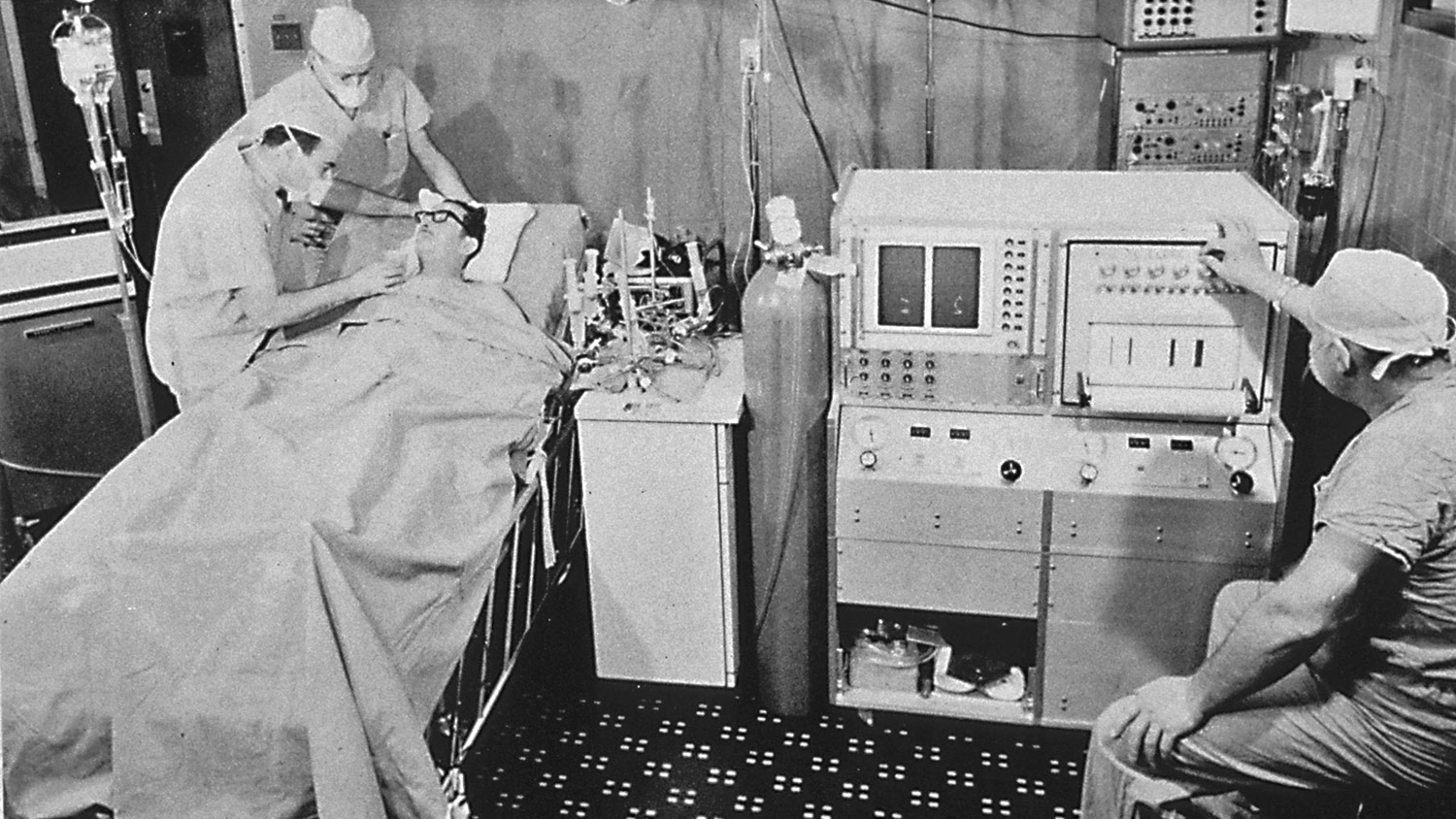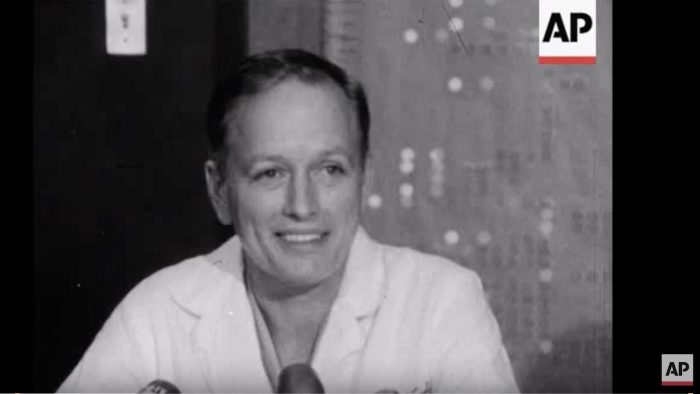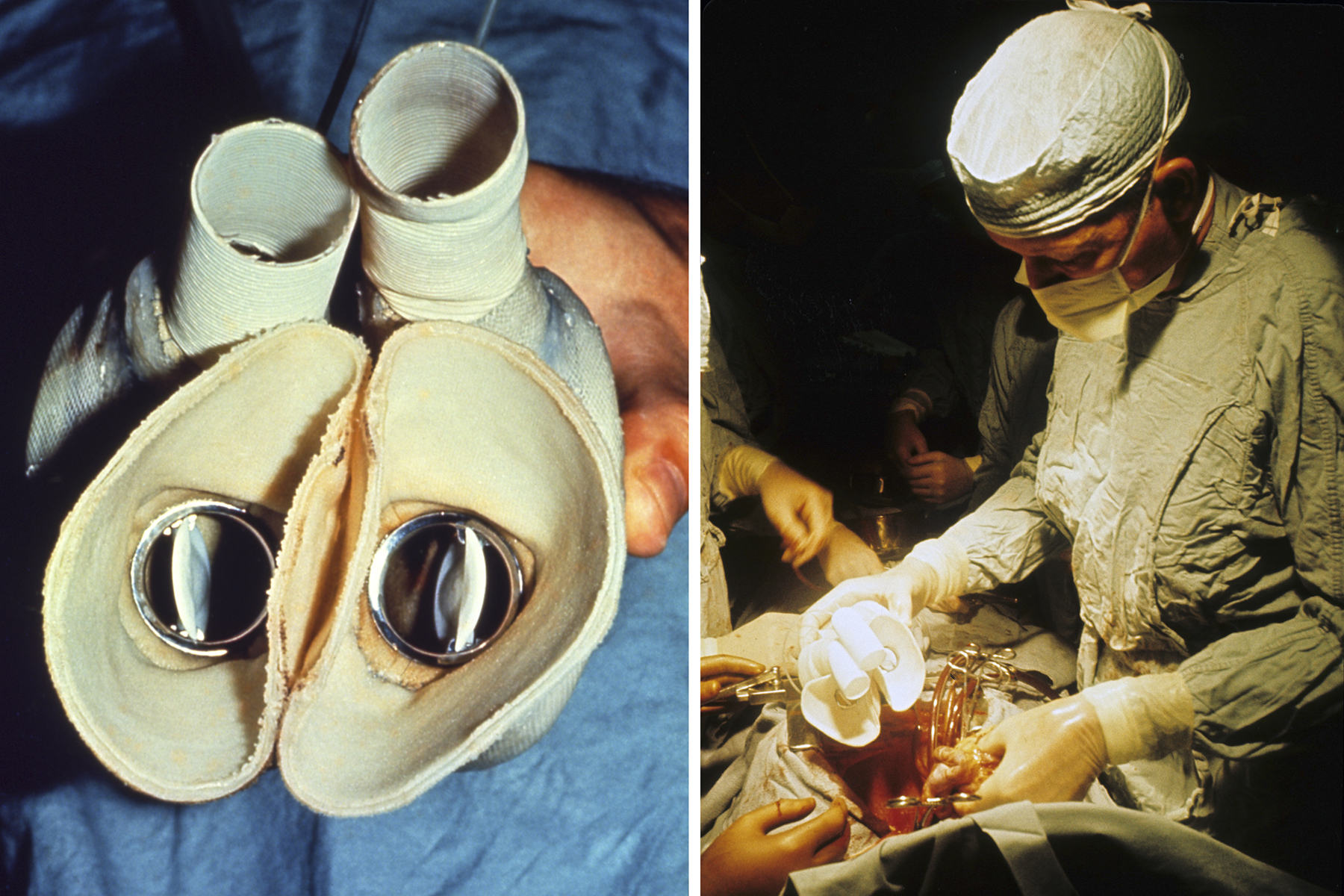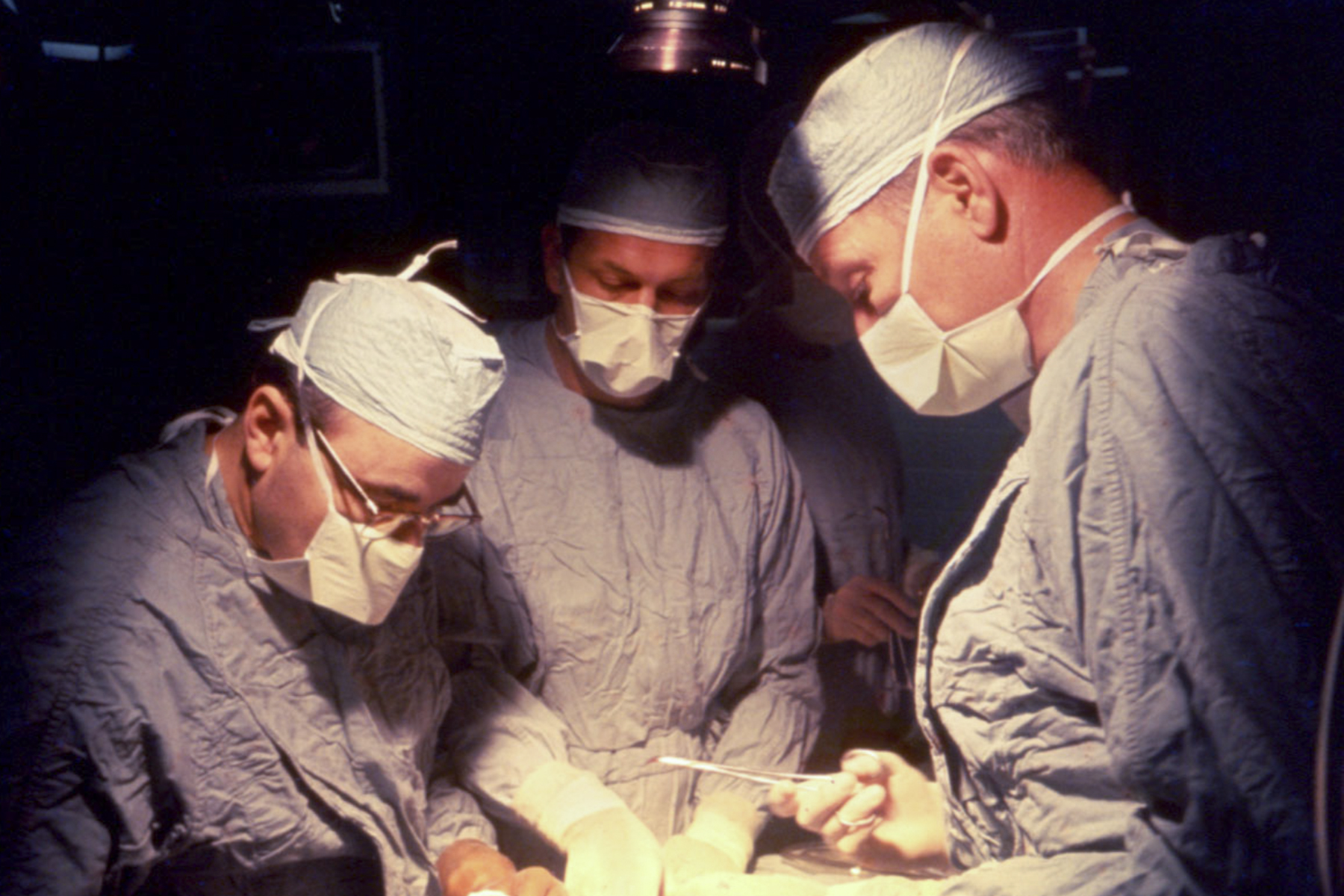50th Anniversary of the World’s First Total Artificial Heart

Celebrating 50 Years of Innovation 1969- 2019
Texas Heart Institute founder Dr. Denton A. Cooley performed the world’s first total artificial heart implant on April 4, 1969, launching the quest to build a total artificial heart. The device, developed by Dr. Domingo Liotta, was implanted in a 47-year-old patient with severe heart failure. The patient lived for nearly three days until a human heart was available for transplant.
This was one of the most significant medical milestones for patients awaiting a new heart and paved the way for mechanical devices to be used as a bridge to transplant.
This experience showed doctors that patients could be “bridged” to transplantation, meaning that mechanical circulatory support systems could be used to keep a patient alive until a donor heart is found.
The Liotta-Cooley total artificial heart was an air-driven (pneumatic), double-ventricle pump. Wada-Cutter hingeless valves controlled the flow of blood through the inflow and outflow areas of the pump. The two pump chambers (the “ventricles”), the cuff-shaped inflow tracts (the “atria”), and the outflow tracts were lined with a special fabric that promoted the formation of a smooth cellular surface. The flexible inflow and outflow tracts were made of Dacron fabric, and the pump chambers were made of Dacron™ fabric and Silastic™ plastic.



.svg)




